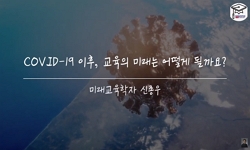Purpose: This study aimed to investigate the impact of delayed retinal clinical care during the COVID-19 pandemic on the severity of proliferative diabetic retinopathy (PDR) and drivers of follow-up delay. We compared disease severity and follow-up ra...
http://chineseinput.net/에서 pinyin(병음)방식으로 중국어를 변환할 수 있습니다.
변환된 중국어를 복사하여 사용하시면 됩니다.
- 中文 을 입력하시려면 zhongwen을 입력하시고 space를누르시면됩니다.
- 北京 을 입력하시려면 beijing을 입력하시고 space를 누르시면 됩니다.


Proliferative Diabetic Retinopathy Requiring Vitrectomy Over Clinic Management During COVID-19: Impact of Delayed Care
한글로보기https://www.riss.kr/link?id=A108687445
-
저자
Bennett E. Ahearn (Department of Ophthalmology, University of Texas Health San Antonio) ; Huy Nguyen (Department of Ophthalmology, University of Texas Health San Antonio) ; Jeong-Hyeon Sohn (Department of Ophthalmology, University of Texas Health San Antonio)

- 발행기관
- 학술지명
- 권호사항
-
발행연도
2023
-
작성언어
English
- 주제어
-
등재정보
KCI등재,SCOPUS
-
자료형태
학술저널
-
수록면
292-298(7쪽)
- DOI식별코드
- 제공처
- 소장기관
-
0
상세조회 -
0
다운로드
부가정보
다국어 초록 (Multilingual Abstract)
Purpose: This study aimed to investigate the impact of delayed retinal clinical care during the COVID-19 pandemic on the severity of proliferative diabetic retinopathy (PDR) and drivers of follow-up delay. We compared disease severity and follow-up rates of PDR patients requiring vitrectomy to those managed nonsurgically, and identified factors associated with need for vitrectomy.
Methods: The study included 739 patients diagnosed with PDR between January 1, 2018, and March 4, 2021, categorized into two groups based on outcome: vitrectomy nonvitrectomy. Statistical methods such as t-tests and chi-square tests were used to analyze differences in disease severity and follow-up rates before and after COVID-19 shutdown. A multivariate regression evaluated factors leading to vitrectomy by comparing initial ETDRS (Early Treatment of Diabetic Retinopathy Study) DR staging, disease stability, DR progression, proliferative complications, appointment intervals, follow-up variance, rescheduling rate, and no-show rate.
Results: Of the 739 patients, 202 required vitrectomy, 537 were managed nonsurgically. The vitrectomy group had more severe or unstable disease before shutdown. The interval between patient visits preshutdown was 29.76 ± 45.11 days in the vitrectomy group and 40.23 ± 56.73 days in the nonvitrectomy group (p < 0.001). Both groups experienced a significant increase in appointment intervals after shutdown, with the vitrectomy group having a greater increase. Both groups had significantly increased rescheduling rate and minimally increased no-show rate. Patient-directed rescheduling was the main driver of appointment delays. Disease factors, such as tractional retinal detachment and higher ETDRS DR staging, increased the odds of vitrectomy, while appointment burden and follow-up variability had a minimal impact.
Conclusions: Patients with more severe PDR and greater delay in appointments due to the pandemic were more likely to require vitrectomy for proliferative complications. Patient-directed rescheduling was identified as the main driver of care delays, as opposed to clinic-directed rescheduling. This study highlights the importance of maintaining regular follow-up appointments for PDR patients during pandemics.
동일학술지(권/호) 다른 논문
-
- 대한안과학회
- Yeon Ju Lim
- 2023
- KCI등재,SCOPUS
-
Clinical and Genetic Findings in Korean Patients with Choroideremia
- 대한안과학회
- Woo Gyeong Jo
- 2023
- KCI등재,SCOPUS
-
- 대한안과학회
- Sooyeon Lee
- 2023
- KCI등재,SCOPUS
-
Neuroprotective Strategies for Nonarteritic Anterior Ischemic Optic Neuropathy: A Systematic Review
- 대한안과학회
- Brigitta Marcia Budihardja
- 2023
- KCI등재,SCOPUS




 KCI
KCI 스콜라
스콜라



